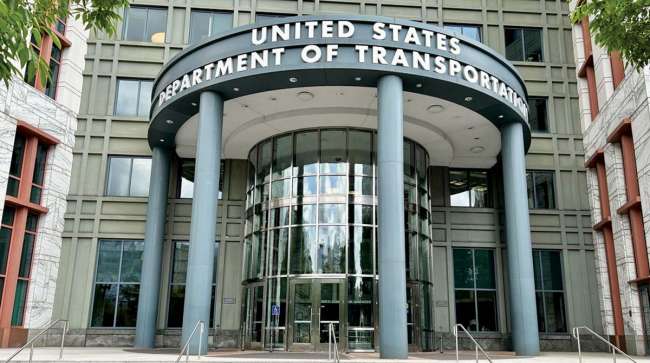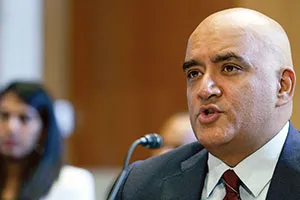Staff Reporter
USDOT Orders States to Create Emission-Performance Metrics

[Stay on top of transportation news: Get TTNews in your inbox.]
The U.S. Department of Transportation on Nov. 22 announced a tight deadline imposed in a final rule by the Federal Highway Administration for states to establish emission-reduction goals and report those targets by Feb. 1.
“This new performance measure will provide states with a clear and consistent framework to track carbon pollution and the flexibility to set their own climate targets — which we will also help them meet with more than $27 billion in federal funding through President Biden’s Investing in America agenda,” Transportation Secretary Pete Buttigieg said.
FHWA, in backing President Joe Biden’s aggressive stance by the federal government to reduce carbon dioxide emissions 50% in seven years, listed two new developments in the announcement.
The first change is to add performance management measures on greenhouse gas emissions to existing FHWA national performance measures by creating a national framework for states to track their emissions actions and influence their overall investments.
In addition, state departments of transportation and metropolitan planning organizations (MPOs) are to establish their own performance measurements to lower emissions associated with roadway travel.
Rishi Mehra of Trimble sheds light on the immense support that transportation technology can provide to enhance the efficiency of the physical supply chain. Tune in above or by going to RoadSigns.ttnews.com.
State DOTs will establish two- and four-year statewide emission-reduction targets and notify FHWA no later than Feb. 1 about those goals. Other target measurements are to be established and conveyed in state biennial reports no later than Oct. 1, 2024, and 2026. MPOs will establish four-year emissions reduction targets for their metropolitan planning areas. MPO targets are due within 180 days of state DOT established targets.
“State DOTs and MPOs have the flexibility to set targets that work for their respective climate change policies and other policy priorities, so long as they are declining. State DOTs and MPOs are also required to report on their progress in meeting the targets,” the USDOT announcement stated.
The performance period for the emission measurements is retroactive and began Jan. 1, 2022, and extends four years. States are required to calculate and report greenhouse gas metrics defined as tailpipe carbon emissions for a given year as computed in million metric tons. MPOs are granted flexibility in calculating the metrics.
Want more news? Listen to today's daily briefing above or go here for more info
“While MPOs are not required to select a metric calculation in coordination with their state DOT, they are encouraged to coordinate with the state DOT on the data used to the maximum extent practicable,” the 129-page final rule noted.
Without specifying whether the projected price tag applied to the federal government, states or both, FHWA estimated in the final rule the total cost would be $10.8 million between 2023 and 2032 to impose the mandate. The total cost calculation determined a predicted “level of effort [including labor hours by category] that would be needed to comply with each applicable section” of the final rule.
“FHWA believes that the benefits justify the costs,” the rule stated. “FHWA does not expect this final rule to result in any increased burden on state DOTs or MPOs by virtue of the fact that FHWA previously established a similar measure that was repealed before any state DOTs or MPOs relied on and implemented its target setting and reporting requirements.”

"We don't expect state DOTs and MPOs to solve a problem this large on their own," says FHWA Administrator Shailen Bhatt. (Mariam Zuhaib/Associated Press)
The rule noted that this measure is a new one that state DOTs and MPOs have not previously implemented. FHWA will assess whether state DOTs have made significant progress toward achieving their targets.
“Transportation is the leading source of greenhouse gas emissions in the U.S., and reducing emissions from that sector while ensuring our economy works for everyday Americans is critical to addressing the climate crisis,” Federal Highway Administrator Shailen Bhatt said. “We don’t expect state DOTs and MPOs to solve a problem this large on their own, which is why this performance measure does not impose penalties for those who miss their targets.”





